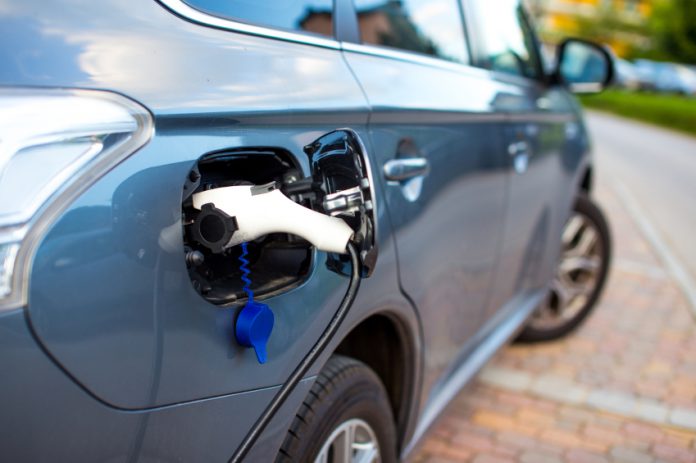
At NerdWallet, we stick to strict standards of editorial integrity to help you make decisions with full confidence. Many or all of the products featured listed here are from your partners. Here’s the way we make money.
You finally got that plug-in electric car. ?Now you’ve got to hook it up.
Getting the right size charging station – or determining whether you’ll need one whatsoever – is not as daunting as it might seem. Just read along:
The basics
Charging speed
Can I overdo it?
What is really a charging station?
Do I truly require a charging station?
Where will i obtain a charger?
What’s it cost?
How will i have it installed?
The basics
The very first thing to understand about plug-in vehicle, or PEV, charging is the fact that there are three levels of power delivery.
- Level 1 charging, the slowest method, uses standard household current, 120 volts, and require dedicated lines or special high-power circuit breakers. Level 1 charging typically provides power for a price sufficient to include Three to five miles of range each hour to some depleted PEV battery pack.
- Level 2 charging, the standard for most home and public charging stations, requires a dedicated 240-volt circuit and can deliver power at various rates, with respect to the size – or amperage – of the circuit. Most professional installers recommend 30- or 40-amp systems, sufficient to handle overnight charging for most PEVs in addition to between-trips “top-up” charging which means you don’t exhaust range while errands on weekends.
- Level 3 charging, also known as rapid or quick charging, draws 480 volts of power and requires an equipment housing that’s concerning the size of a service station pump, which makes it impractical for use at home. Level 3 systems are designed to take a battery from near-depletion to 80% of capacity in about 30 minutes and are meant to facilitate longer trips than the usual single home charge will grant.
Level 1 and Level 2 charging deliver capacity to the car through a special plug-in connector nozzle that’s standard throughout the U.S. for levels of charging.
There are three different Level 3 systems in use in the U.S. One, for some Asian models, notably the Nissan Leaf and Kia Soul EV, is called the?CHAdeMO system; one used exclusively by Tesla is the?Tesla Supercharger system; and the third, used by all European and U.S. models plus some Asian models, is the SAE Combo system. Each one has its very own dedicated connector nozzle.
Tesla’s widespread network of Superchargers may be the just one so far to enable cross-country travel (Tesla also provides a CHAdeMO adapter). Other Level 3 stations are typically available at plug-in electric dealerships in cities and along heavily traveled regional transportation corridors; most offer both CHAdeMO and SAE connections. A site called PlugShare.com will map nearby charging stations for you.
[]
Charging speed
How quickly you can charge your plug-in car depends upon the amperage from the charging circuit and also the capacity from the car’s charger, that is rated within the number of kilowatts it will take in per hour.
Most plug-in hybrids have 3.3-kW chargers. Some all-electric cars have 3.3-kW chargers, but many now provide at least 6.6-kW charging and some go higher. Teslas, for example, all start at 10 kW, and there is a choice to double that to 20 kW per hour.
To determine how fast a charging station is going to be, multiply the rated amperage through the voltage and divide by 1,000 (the number of watts in a kilowatt). An amount 2 charging station rated at 30 amps will deliver 7.2 kW per hour: 240 x 30/1000. It’ll service cars with on-board chargers with a rating of 7.2 kW or less. It also would work for 10-kW charging, but it wouldn’t charge the car at its rated speed. For your you’d need to buy at least a 40-amp system.
[]
Can I go crazy?
All charging degrades batteries, and Level 3 charging is harder on them than Level 1 or Level 2 charging. Repeated utilization of rapid charging can shorten the useful life of a PEV’s batteries.
The big culprit is heat, and as a charging battery approaches full capacity, heat generated through the process increases. The entire process of draining and recharging also impacts the battery’s internal chemistry and its ability to store and hold a charge. Many PEV specialists recommend keeping batteries charged at a maximum of 80% of capacity when possible. (Like a provision, most PEV battery packs are designed to have some unused capacity once the charging status gauge reads “full.”)
[]
What is really a charging station?
Everyone calls them chargers, but the wall boxes and stanchions we plug our electric vehicles into are actually just communication and safety devices. The real chargers, aside from the high-power Level 3 chargers, are actually area of the vehicle.
The proper reputation for a house charger is electric vehicle service equipment, or EVSE. ?But when you decide to go shopping for a “home charging station,” everyone will know what you want.
The EVSE communicates with the car’s charging system to manage power and keep battery pack from overheating. It also can shut down to prevent an electric fire in the event of a brief, and it anchors the charging cord towards the wall and provides a place to keep the coiled cord.
[]
Do I really require a charging station?
How valuable is your time?
All PEVs come with a Level 1 cord set that you can use?to charge your vehicle from any standard wall socket. If you can get enough juice into the battery power having a Level 1 cord to help you make use of the car around you need, then you do not possess?to purchase?a Level 2 home charging station.
But typically, that Level 1 cord set will deliver power in a fairly slow rate – generally enough to add 3 to 5 miles of range to your battery pack each hour.?Many plug-in hybrids can be charged overnight at Level 1. A model with a battery able to providing 20 miles of all-electric range would take four to seven?hours to recharge that way.
But battery power electric vehicle that gives 90 miles of range from charges would take 18 hours or more to recharge on the Level 1 system – if you completely depleted battery. Remember that the average American drives no more than 29 miles each day, according to AAA, and consider your personal driving habits and requires. Many drivers of battery electric vehicles manage with overnight charging on Level 1.
Level 2 charging, that standard for home systems and many public charging stations, provides power at a much faster rate – 10 to 25 miles of range per hour.
It’s easiest to charge your car when it’s?parked both at home and you’re not planning to use it for a while.?However, many PEV owners discover that they are able to get away with charging while at the office, if their employer offers workplace charging or a public charging station is nearby. Plus some have found it feasible to use publicly available chargers at retail, entertainment and government centers near their home or workplace, most of which charge a collection fee per hour of charging.
[]
Where do I obtain a?charger?
Most dealerships that sell plug-in vehicles also sell home charging stations; carmakers usually have a frequent EVSE supplier.
But you don’t have to purchase a BMW-branded home station simply because you’re buying or leasing a BMW i3. Most charging stations may be used with most plug-in vehicles. Tesla is the outlier with its own proprietary charging system. Tesla owners can buy adapters which allow them to use non-Tesla EVSEs, but many are slower than the Tesla system.
You can save money by shopping on the web at Ebay and amazon or from big-box home improvement stores for example Lowe’s and?Home Depot.?You can also buy from many charging-equipment makers via their websites.
The major home EVSE makers include?AeroVironment,?Blink,?Bosch,?ClipperCreek,?Delta Energy Systems,?Eaton,?Evatran Group,?EVoCharge,?Whirlpool, Leviton and Siemens.
[]
What’s it cost?
Home EVSEs run from around $300 to a lot more than $1,000; you’ll also have the cost of installation (more about that below).
The cost of the EVSE depends upon the ability levels, cord lengths and extras for example Wi-Fi capability, timers for delayed and time-of-day charging – most PEVs have on-board timers that handle that – and even automated record-keeping that will help you track power usage.
You can get charging cord sets with Level 2 capacity that get rid of the wall-mounted station. But they typically provide slower charging rates but still require a dedicated 240-volt circuit.
[]
How do I have it installed?
Most qualified electricians can install an EVSE system in your garage, carport or any other residential parking spot. Some rental property landlords and apartment complex operators will permit tenants to set up EVSEs, although installing in a remote car park or structure can be very costly.
In most jurisdictions, you’ll need a building permit, and it’s always wise to seek advice from your utility company to see if it offers special rates for plug-in vehicle charging. Many do.
Installation price varies widely based on labor rates in your area, the amount of work involved in installing the required circuitry and also the distance, or “run,” between your home electric service box and the charging station. A normal installation is likely to cost?between?$250 and?$750, and systems that need long runs, additional breaker panels or other special equipment and labor can certainly cost double that.
Some EVSEs need a hard-wired installation, while others could be connected to a passionate 240-volt wall socket.
Often, your local electric utility can give a list of qualified installers.
[]
More from NerdWallet
Hybrid and Electric Vehicles: Technology
Hybrid and Electric Vehicles: Cost
Electric Cars: A 4-Point Decision Guide
John O’Dell is really a longtime automotive writer who has covered alternative-fuel cars for that Los Angeles Times and Edmunds.com. Lucrative runs the web site?Saving money Car Guy.?Email:[email protected].














